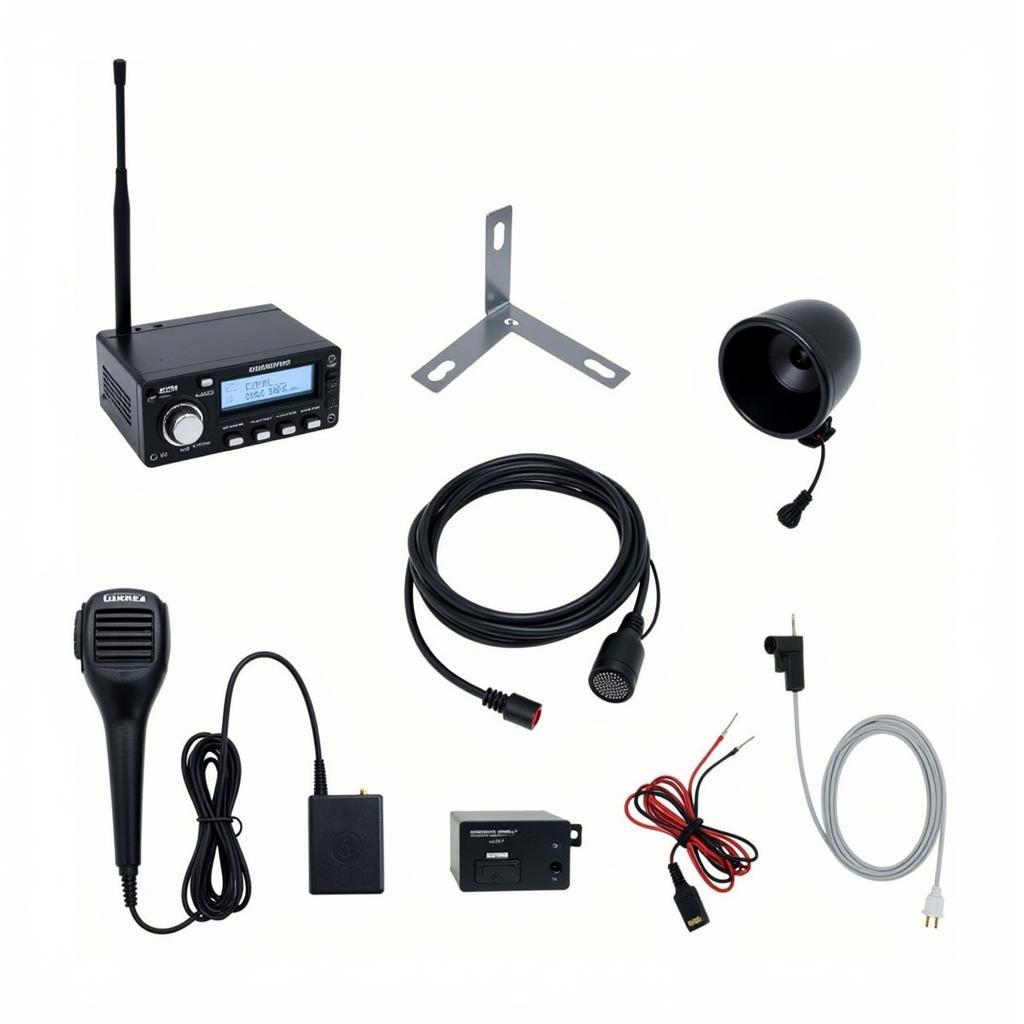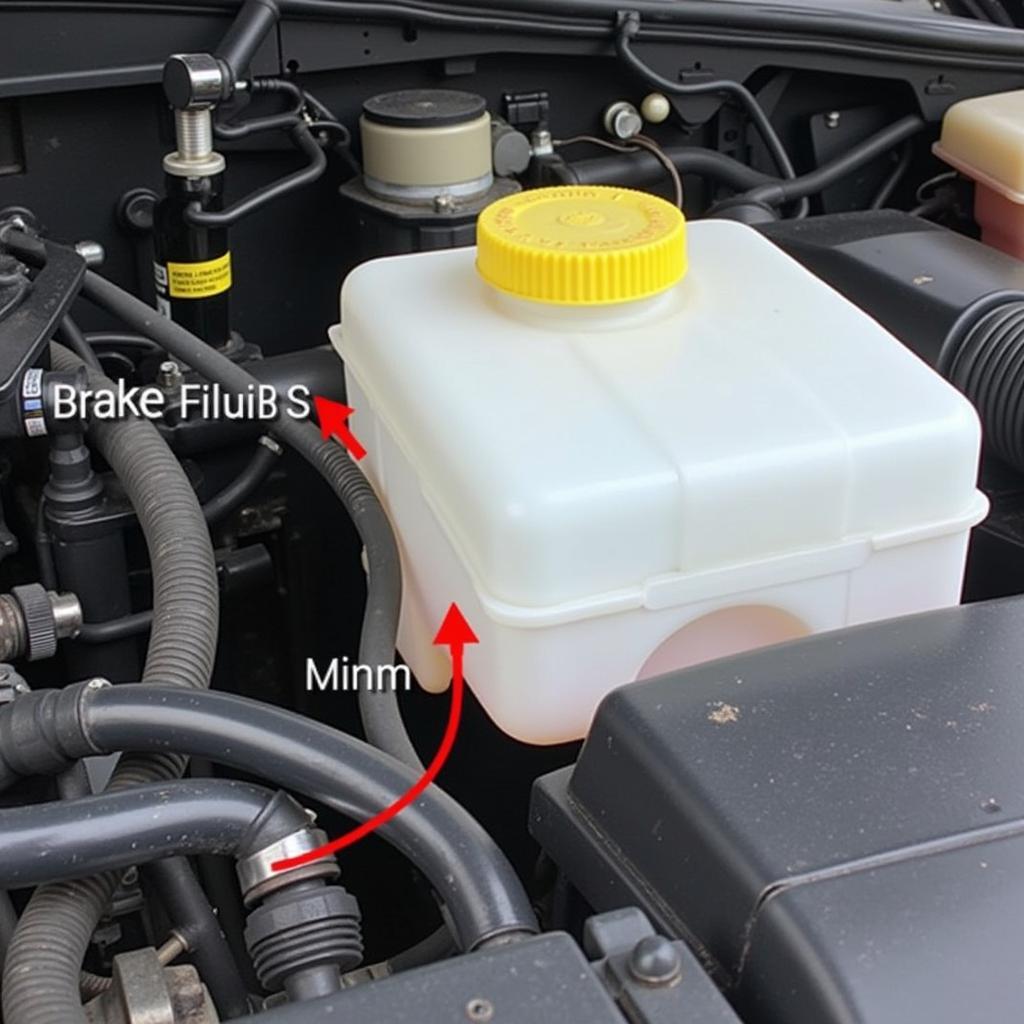Installing a two-way radio in your car can significantly improve communication, especially for businesses, off-road enthusiasts, and emergency services. This guide provides a step-by-step approach to installing two-way radio in car, covering everything from choosing the right equipment to troubleshooting common issues.
 Two-Way Radio Installation Kit Components
Two-Way Radio Installation Kit Components
Choosing the Right Two-Way Radio
Selecting the correct two-way radio is crucial for optimal performance. Consider factors like range, power output, and features. VHF radios are suitable for short-range communication in urban areas, while UHF radios excel in environments with obstacles. For longer ranges, consider GMRS or amateur (ham) radios, but be aware of licensing requirements. Think about features like weather alerts, GPS, and privacy codes to enhance your communication experience. Don’t forget to factor in the antenna type, as it plays a vital role in signal strength and clarity.
installing two way radio in car
Essential Tools and Materials
Before you begin installing two-way radio in car, gather the necessary tools and materials. You’ll need a wiring harness, antenna mount, coaxial cable, zip ties, electrical tape, wire strippers, a drill, and screwdrivers. Having these readily available will streamline the installation process and prevent unnecessary delays.
Mounting the Radio Unit
Choose a convenient and accessible location for your radio unit, typically the dashboard or center console. Ensure the location doesn’t obstruct driving visibility or interfere with other controls. Use the provided mounting bracket and screws to securely attach the radio unit. Consider using a template to mark the drilling points for a precise fit.
Wiring the Radio
Connecting the wiring harness correctly is critical for proper radio function. Follow the wiring diagram provided with your radio and identify the power, ground, and antenna connections. Use wire strippers to expose the wire ends and secure the connections using crimp connectors or electrical tape. Ensure all connections are tight and properly insulated to prevent shorts or other electrical issues.
Installing the Antenna
The antenna is crucial for transmitting and receiving signals. Choose a suitable mounting location, such as the roof or trunk, for optimal signal reception. Mount the antenna securely using the provided mount and coaxial cable. Ensure the cable is routed away from other wires and components to minimize interference. Proper antenna installation is key to maximizing your two-way radio’s range and performance.
Testing and Troubleshooting
Once the installation is complete, test the radio’s functionality. Turn on the radio and check for clear audio and signal reception. If you encounter any issues, double-check all connections and wiring. Consult the troubleshooting section of your radio’s manual for specific error codes or solutions.
How do I choose the right antenna for my two-way radio?
The antenna type depends on your radio’s frequency and desired range. Consult your radio’s specifications for recommended antenna types.
Can I install a two-way radio myself?
Yes, with basic automotive wiring knowledge and the right tools, you can install a two-way radio yourself.
how to install two way radio in car
Powering your Radio
Connecting the radio to the car’s power supply requires careful attention. Most radios use a standard 12V DC power connection. Identify the appropriate power source in your car’s fuse box or directly from the battery. Use an inline fuse to protect the radio and the car’s electrical system.
“A properly installed two-way radio is an invaluable tool,” says John Smith, a certified automotive electrician. “It enhances communication and safety, especially in challenging situations.”
how to install a sirius radio in your car
“Remember to always double-check your connections and consult the radio’s manual for specific instructions,” adds Jane Doe, an experienced communications technician. “This ensures optimal performance and prevents potential issues.”
Conclusion
Installing a two-way radio in your car can be a straightforward process with the right guidance. By following these steps and paying attention to detail, you can successfully install two-way radio in car and enjoy improved communication on the road.
FAQ
-
What is the best location to mount a two-way radio in a car?
The best location depends on your vehicle and personal preference, but the dashboard or center console are common choices. -
What type of antenna is best for two-way radio in car installations?
The ideal antenna depends on the radio’s frequency and desired range. Consult the radio’s specifications. -
Do I need a license to operate a two-way radio in my car?
It depends on the type of radio and its power output. Some radios, like CB radios, do not require a license, while others, like GMRS or amateur radios, do. -
How do I troubleshoot common issues with my car’s two-way radio?
Consult the troubleshooting section of your radio’s manual for specific solutions. -
What are the benefits of installing a two-way radio in my car?
Enhanced communication, improved safety, and coordination with others, especially in group activities or emergencies. -
Can I use a two-way radio while driving?
Yes, but always prioritize safe driving practices. Use hands-free accessories if possible. -
How do I maintain my car’s two-way radio?
Regularly check connections, keep the radio clean, and consult the manual for specific maintenance instructions.

